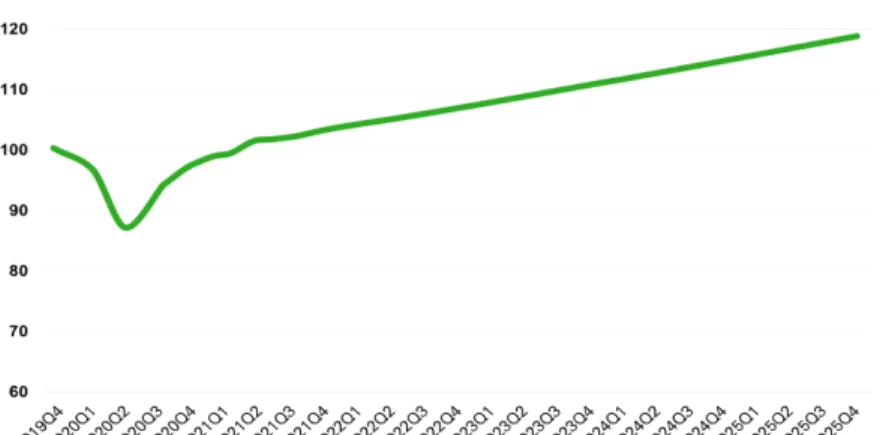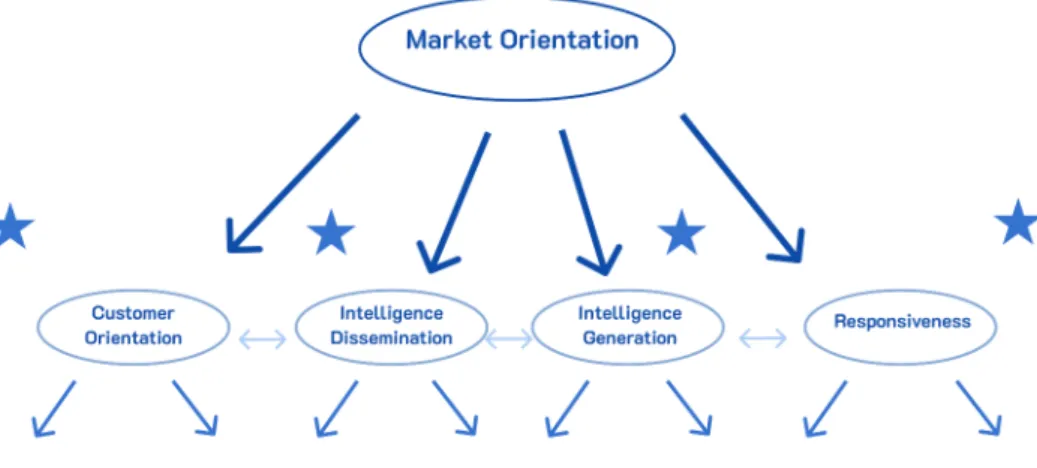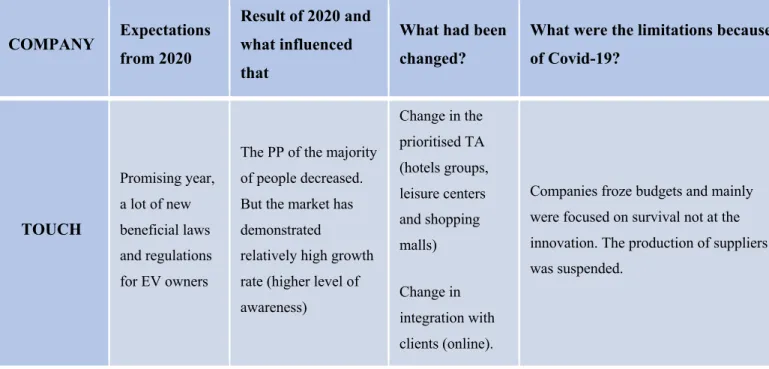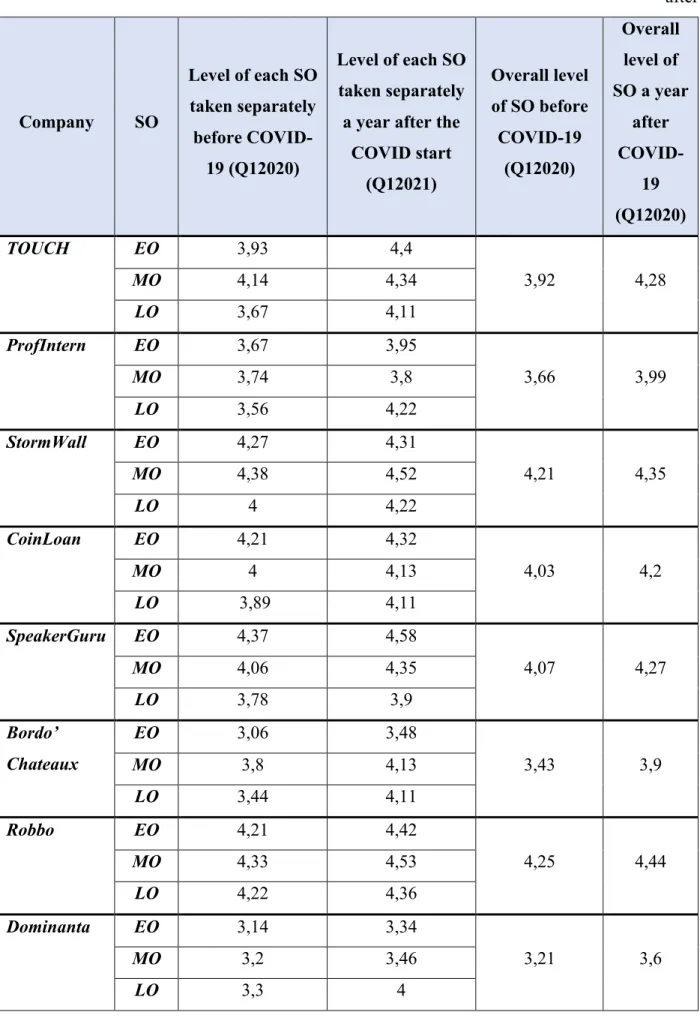Furthermore, the choice of the empirical research strategy, which is also fully presented in the 3rd chapter, is introduced. The first chapter includes the analysis of the market conditions for SMEs and mentions the problems and limitations caused by the Covid-19. Elaboration of the framework that will describe strategic behavior of SMEs with international presence in crisis, including the data collection and interpretation.
- The definition of Small and Medium Enterprises with international presence
- The definition of crisis and its influence on Small and Medium Enterprises
- Crisis conditions caused by Covid-19 in 2020
- Conclusion for the chapter 1
SMEs with an international presence are described in this work from the point of view of the consequences of crisis situations for them. The chance of a crisis and the severity of the crisis differs per sector and per company. A study on the vulnerability of small and medium-sized enterprises to adverse environmental conditions was presented by Aldrich and Oster.

Theoretical framework. Strategic orientations
Definitions of Strategic Orientations
- Main types of Strategic orientations
Firm performance during the economic crisis: the role of strategic orientations and financial capital. Market orientation is often studied and almost universally recognized as one of the main factors of the company's success and efficiency.35. The characteristics of a learning organization are reflected in the components of a learning orientation, which are: commitment to learning, a shared vision for the organization and openness to new ideas and opinions.40.
The role of strategic orientations in the firm’s performance (with the focus on SMEs)
- Approach to the measurement of SO
Entrepreneurial orientation and business performance: An assessment of past research and suggestions for the future. The impact of customer orientation and entrepreneurial orientation on innovation: Evidence from the Swiss hotel industry. Exploring the relationship between strategic reactivity and entrepreneurial orientation: The role of structure and style fit.

The strategy of Empirical Research
This strategy was chosen due to the term "online transition"65 that had happened to most companies in 2020 due to government restrictions. In general, the greater use of the Internet and online services had influenced the transition process in most industries (eg the ProfIntern case, the introduction of the new Remote Internship service line, due to the fact that field internships in Russia for foreign students were impossible due to the closure.limits, which will be described further). Multiple, due to the fact that it was important to see the situation in different industries with different conditions.
And holistic because in this research it is important to look at different aspects of companies' performance under COVID-19 conditions: to look at each case, but to see the overall picture. The main principle of data collection for the study was the semi-structured interview method and the surveys (mainly source), in addition to secondary (company website, published interviews and articles, company social media, databases) and company performance information from the database. The multi-data source approach was also chosen to achieve data triangulation, which implies the use of different data collection methods to ensure the validity of the conclusions drawn from the data.
A list of research questions was prepared in front of the manager and analyzed to obtain the necessary information. The list consisted of 23 questions, which are subjectively divided into 3 parts and 5 subsections, where 1 part is a general description of the company, the second part is the concept of strategic directions and Covid-19. The sub-sections are as follows: general issues, business orientation, market orientation, learning orientation, impact of COVID-19 in early 2020 and late 2020.
The multiple case study should cover the aim of the thesis, which is to elicit manifestations of strategic orientations in small and medium-sized enterprises with international presence, focusing on crisis conditions caused by COVID-19.
Companies profile
- Companies in the pre-COVID-19 environment and during Covid-19 and their strategic plans
- Measurement of strategic orientations in SMEs with international presence
The company offers subscription-based services for various websites (from bloggers and small businesses to large corporations). 69 The information taken from the company's official website https://profintern.com/ and the interview. 70 The information taken from the company's official website https://stormwall.pro/ and the interview.
71 The information obtained from the official website of the company https://mydominanta.com/ and the interview. 72 The information obtained from the official website of the company https://speakerguru.pro/ and the interview. The company is currently offered in more than 20 countries (with offices in Russia, Finland and Japan).
73The information obtained from the company's official website https://bordochateaux.com/ and the interview. 74 The information obtained from the company's official website https://robbo.ru/ and the interview. The company had noticed that due to the introduction of distance learning, the market has grown tremendously.
In 2020, the company was completely against online activities and was waiting for the end of the crisis. However, with the advent of restrictions, the company's activities were frozen for more than a month. In addition, the company became more open, which was achieved by all employees starting to generate critical ideas.

Patterns of Strategic Behaviour
- Patterns of Strategic Behaviour for the analysed companies
The company is not proactive with a low level of entrepreneurial and market orientation, which has affected the company's activities in 2020. Companies with a high degree of entrepreneurial orientation and a low (or medium to low) level of market and learning orientation. Usually companies with a high willingness to take risks, innovative companies which are concentrated in 1 maximum 2 markets and which are not focused on learning or market orientation.
Companies with high level of entrepreneurial and learning orientation, but low, or medium to low level of market orientation. Companies with high level of market orientation and low, or medium to low level of learning and entrepreneurial orientation. The combination of high level of market and learning orientation makes the companies highly committed to learning and open to the customer's needs.
In this part, the companies analyzed are correlated with certain strategic patterns based on the level of their strategic orientations. A year after the start of the pandemic, the level of the company's strategic orientations changed, it was that the company traced a pattern of a Market Entrepreneurs (with the EO = 4.4, MO = 4.34 and lower level of LU = 4 ,1);. Before the pandemic, the company that observed the level of its strategic orientations was closed to the pattern of Strategic losers (EO = 3.67; MO = 3.74; LO = 3.56).
4 out of 8 companies achieved better results than last year, and the high level of strategic orientations also influenced this.

Conclusion for the Chapter 3
In the thesis, the strategic orientation of SMEs was analyzed as one of the qualitative instruments that support companies' performance. Strategic orientations affect the company's effectiveness from different perspectives, which can be seen from the interview and the analysis provided. In general, the level of strategic orientations had increased for all the companies analyzed, but the companies with the higher level of EO and MO had shown greater results in 2020 and were less affected by Covid-19.
The aim of the thesis is to reveal the changes in the strategic orientations of small and medium-sized enterprises with an international presence that occurred during the year of the COVID-19 pandemic with the aim of formalizing the possible patterns of strategic behavior that emerge in response to the crisis. Based on the literature analysis from chapter 2 and the empirical analysis from chapter 3, models of strategic behavior were also concluded, taking into account the correlation of the three strategic orientations. It cannot be said that the described characteristics are an absolute guarantee of the survival of small and medium enterprises in a period of crisis (Covid-19).
By measuring the level of strategic orientations in companies, one can relate the company to one of the 7 types of organization described in Chapter 3. The practical application of strategic orientations has not been previously researched, which increases the relevance of the research and a starting field for further research. However, through the analysis provided, it is seen that strategic orientations affect the company's effectiveness and most of the companies have been quite successful even in crisis conditions.
The study of the performance of small and medium-sized enterprises in the context of the crisis provided by Beliaeva T.
Measurement scales of entrepreneurial orientation, market orientation and learning orientation
Our business strategies are guided by our beliefs about how we can create greater value for customers. All of our business functions (eg marketing/sales, manufacturing, R&D, finance, etc.) are integrated to serve the needs of our target markets. All our managers understand how everyone in our company can contribute to creating customer value 15.
We ask end users at least once a year to rate the quality of our products and services. We periodically review the likely effect of changes in our business environment (eg regulation) on customer intelligence sharing. When something important happens with a major customer of the market, the entire business unit knows about it within a short period of time.
We regularly disseminate customer satisfaction data at all levels in this business unit. For one reason or another, we tend to ignore changes in our customers' needs for products or services. Leaders basically agree that our organization's ability to learn is the key to our competitive advantage.
Personnel in this company realize that the way they see the market must be constantly questioned 15.
Adapted scales of entrepreneurial orientation, market orientation and learning orientation used
We visit customers at least once a year to see what products or services they will need in the future. 2. If we came up with a good marketing plan, we could implement it in a short time. We are not afraid to critically reflect on the shared assumptions we have made about our customers.
Interview guide
What were your expectations in begging in 2020 and how did they change due to the crisis situation. Copy of Excel tables: calculation of levels of strategic orientations in SMEs with international presence before Covid-19 and one year after.
Copy of Excel tables: calculating levels of strategic orientations in SME with international
Detailed comparison of levels of EO, MO and LO for each company






